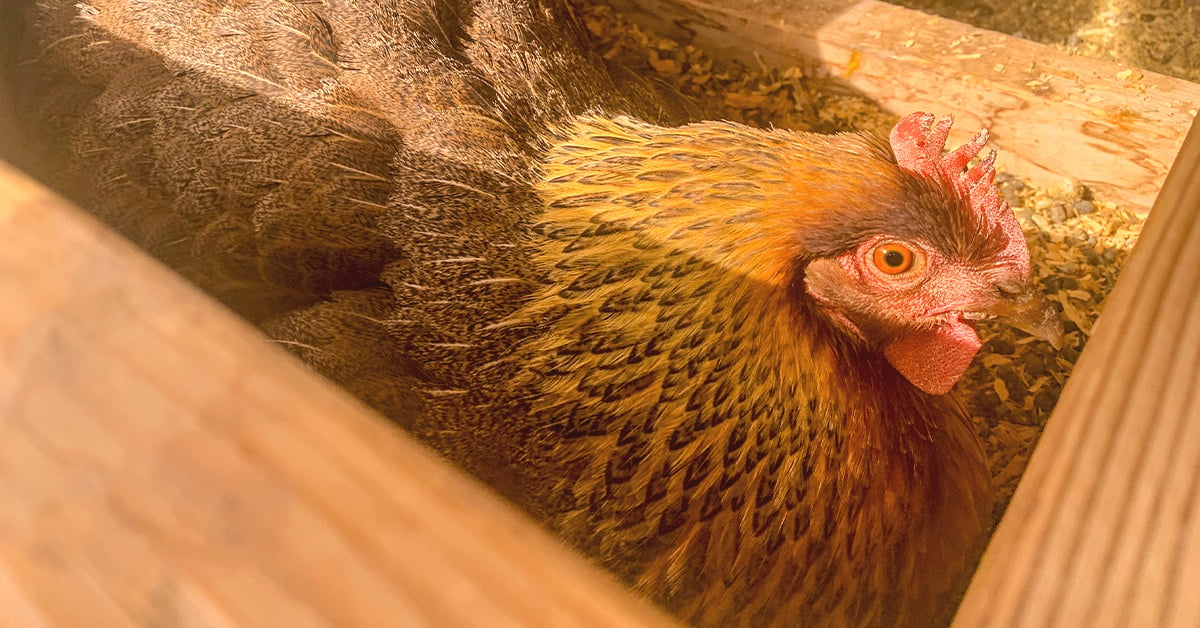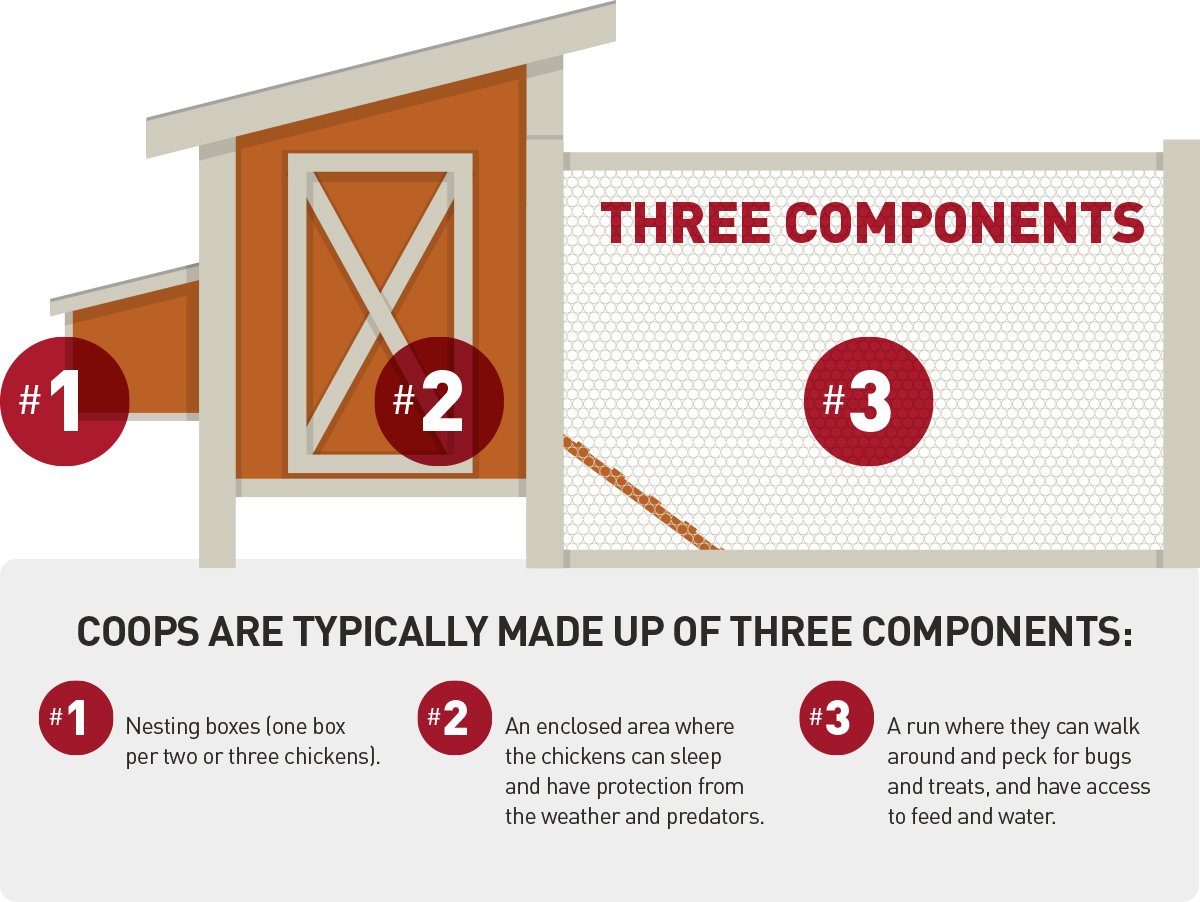
You’ve brought home baby chicks. They’re thriving and the dream of waking up to delicious fresh eggs each morning is slowly nearing reality. All you need now to take the next step is a coop.
Pre-built chicken coops come in a variety of sizes and styles. Some are stationary, while others are mobile. Whether you plan to pick up a coop for the backyard or build one yourself, you should consider all aspects of how to set up a chicken coop. What will your coop need, and how will you and your chickens will use it.
The Backyard Chicken Coop and a Space to Run
Chicken coops are typically made up of three components: nesting boxes (one box per two or three chickens), an enclosed area where the chickens can sleep and have protection from the weather and predators, and a run where they can walk around and peck for bugs and treats, and have access to feed and water.
When you’re planning to build your own coop, consider creating a door that is tall enough for you to get inside comfortably. You’ll be glad you did when it’s time to clean and maintain the coop.
The inside of an ideal chicken coop will allow for up to four feet per chicken. The run should allow for about 10 feet per chicken. However, chickens are very capable of adapting to more confined spaces if necessary. Chickens are a flock animal and naturally enjoy being together.

As a replacement for a run, you can let your chickens roam around your yard. Even if you don’t have a large yard, your chickens are very happy to enjoy the space. Be aware your chickens will eat anything that appeals to them, like your garden and even your flowers. Also make sure your chickens are safe from predators should you allow them to roam free in the yard during the day.
Build your coop with materials that will stand up to the weather. A metal roof will help snow slide off and keep your coop from leaking water. Using house paint on the outside will help increase the life of your coop as well.
Nesting Box and Roost Ideas
Nesting boxes should be placed inside the coop where it’s darker, yet in a spot where it’s easily accessible from the outside to gather your eggs. You can use straw, shavings or bedding pellets as materials for bedding in your nesting boxes.
The roost should be placed in the coop where the chickens can be secured from predators during the night. It can be placed high in the coop or just a few inches off the floor. All the hens need is to be able to wrap their feet around the roost while they sleep. This is especially important in the winter so they stay warm.
If you place the roost a few feet from a wall, it’ll make it easier to keep the coop clean. Since chickens’ poop while on the roost, you’ll want to avoid placing it above the feeder, waterer or nesting boxes.

Placing Your Feeders and Waterers
Feeders and waterers come in a variety of shapes, sizes and styles. Whichever style you prefer, the most important detail to remember is that your chickens always need fresh, clean water.
They function best if placed in the run instead of inside the coop. Chickens don’t usually eat after they go to roost, which is about 30 minutes before dusk. The best place for your feeder and waterer is where your chickens spend the most time during the day. Make sure to keep them off the ground to prevent potential contamination and debris, but low enough for all the chickens to have easy access.
Some people prefer feeders that hold larger quantities of food so they don’t need to be refilled as often. That works great, as long as the feed is protected from the weather.
The majority of waterers use gravity to keep the water supply constant and the chickens drinking during the hot summer months. You’ll want to clean the waterer regularly and refill with fresh water often.
Another detail to consider when placing the feeder is what other animals might be attracted to it, such as mice, rats, raccoons and wild birds. It’s best to put strong wire mesh on all sides and on top of the run. Digging down about 18 inches to bury the wire mesh around the entire coop will also help protect your chickens from predators that’ll attempt to dig under it.

More Backyard Chicken Coop Tips
- Consider running an electrical cord into the coop to hang a light for warmth and improved egg production during shorter days.
- It’s helpful to have a little storage area in the top of the coop to keep supplies within easy reach.
- An automatic door from the coop to the run will let the chickens out in the morning and close them in at night to roost safely away from predators.
- Often referred to as a “Chicken Tractor”, some people like to move their coop around the yard so their chickens can eat in different places.
Visit your local IFA Country Store for additional advice, and to find everything you need to set-up the very best home for your feathered friends.
Information for this article was provided by Sandie Shupe, Poultry, Rabbit & Animal Health Manager, Ogden IFA Country Store; Martha Page, Assistant Store Manager, Poultry, Rabbit & Pet Dept., Riverton IFA Country Store; and Jill Singleton, Bagged Feed Category Manager, IFA.








